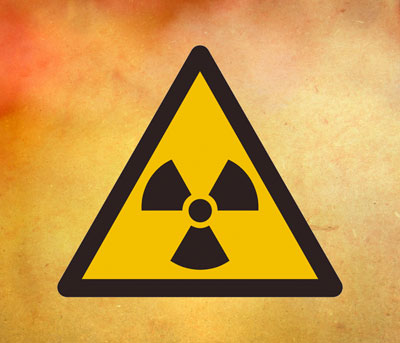Washington’s Blog
April 7, 2011
When scientists speak of radiation, they speak not only of single doses but also of cumulative doses.
 See for example, this research from the University of Iowa showing that “cumulative radon exposure is a significant risk factor for lung cancer in women”.
See for example, this research from the University of Iowa showing that “cumulative radon exposure is a significant risk factor for lung cancer in women”.
And see these studies on the health effects cumulative doses of radioactive cesium. (As I noted on March 29th, the radioactive cesium fallout from Japan already rivals Chernobyl. And the amount of radioactive fuel at Fukushima dwarfs Chernobyl).
Admittedly, the damage from huge single doses may be greater than the same cumulative dose from many small exposures. But the smaller doses can still add up.
Many studies have shown that repeated exposures to low levels of ionizing radiation from CT scans and x-rays can cause cancer. See this, this, this, this, this, this, this, this and this.
Remember, the radiation from CT scans and x-rays are external emitters – the radiation emanates from outside the body. In contract, internal emitters keep emitting their radiation inside the body. Therefore, the cumulative effect of multiple small doses of radiation from internal emitters could be even more dramatic, depending on the half life, metabolic pathways and other properties of the particular radioactive particle.
As the European Committee on Radiation Risk notes:
Cumulative impacts of chronic irradiation in low doses are … important for the comprehension, assessment and prognosis of the late effects of irradiation on human beings …
And see this.
One of the World’s Leading Experts on Radiation – Karl Morgan – Warned of Cumulative Low-Dose Exposures
American reporter Dahr Jamail reports today for Al Jazeera:
“The U.S. Department of Energy has testified that there is no level of radiation that is so low that it is without health risks,” Jacqueline Cabasso, the Executive Director of the Western States Legal Foundation, told Al Jazeera.
Her foundation monitors and analyzes U.S. nuclear weapons programs and policies and related high technology energy, with a focus on the national nuclear weapons laboratories.
Cabasso explained that natural background radiation exists, “But more than 2,000 nuclear tests have enhanced this background radiation level, so we are already living in an artificially radiated environment due to all the nuclear tests.”
“Karl Morgan, who worked on the Manhattan project, later came out against the nuclear industry when he understood the danger of low levels of ionizing radiation-and he said there is no safe dose of radiation exposure,” Cabasso continued, “That means all this talk about what a worker or the public can withstand on a yearly basis is bogus. There is no safe level of radiation exposure. These so-called safe levels are coming from within the nuclear establishment.”
Karl Morgan was an American physicist who was a founder of the field of radiation health physics. After a long career in the Manhattan Project and at the Oak Ridge National Laboratory, he became a critic of nuclear power and weapons. Morgan, who died in 1999, began to offer court testimony for people who said they had been harmed by the nuclear power industry.
“Nobody is talking about the fact that there is no safe dose of radiation,” Cabasso added, “One of the reasons Morgan said this is because doses are cumulative in the body.”
Indeed, Karl Morgan believed that the officially-defined “permissible levels” of radiation – which he helped to create on behalf of the government – are much higher than they should be.
As the Guardian wrote in Morgan’s obituary in 1999:
Karl Morgan … was a pioneer of health physics – the science of the effect of exposure to radiation on health. He was a member of the research group which laid the foundations for the Manhattan project and produced the first atomic bomb. However, after 30 years in the inner cabinet of the nuclear establishment, Morgan changed sides and testified in key radiation cases on behalf of those who claimed they had been harmed by nuclear weapons and the nuclear power industry.
The first signs of his change of view came in 1968, when he became an influential campaigner in obtaining a US law that required the medical profession to control excessive doses of radiation during X-rays.
After retirement in 1972 he became more active in drawing attention to the limitations of radiation protection measures.
He began his career as a physics professor but in 1943 was recruited to become a senior scientist in health physics to the top secret, atomic bomb project codenamed Manhattan Engineer District.
No comments:
Post a Comment